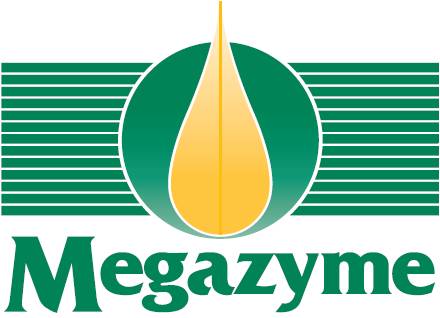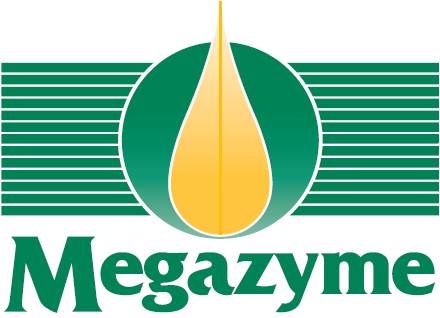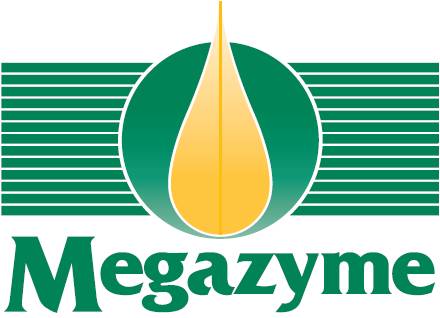- 乙醇检测试剂盒
-
英文名:Ethanol Assay Kit
-
货号:K-ETOH
-
规格:60 assays (manual) /
- Simple format – aldehyde dehydrogenase supplied as stable suspension
- Very competitive price (cost per test)
- All reagents stable for > 2 years after preparation
- Rapid reaction
- Mega-Calc™ software tool is available from our website for hassle-free raw data processing
- Standard included
- Extended cofactors stability
- Suitable for manual, microplate and auto-analyser formats
- Ensure that you have tested the standard sample that is supplied with the Megazyme test kit.
- Send the results of the kit standard, blank samples and the results obtained for your sample, in the relevant MegaCalc spreadsheet (if available) to Megazyme (cs@megazyme.com). Where available the relevant MegaCalc spreadsheet can be downloaded from where the product appears on the Megazyme website.
- State the kit lot number being used (this is found on the outside of the kit box).
- State which assay format was used (refer to the relevant page in the kit booklet if necessary).
- State exact details of any modifications to the standard procedure that is provided by Megazyme.
- State the sample type and describe the sample preparation steps if applicable.
- Carefully add an equal volume of ice cold 3 M perchloric acid and homogenise / fully disperse the sample (as appropriate).
- After 15 min incubation on ice (or in a refrigerator), centrifuge at 3000 x g for 15 min at 4oC.
- Neutralise by the slow addition of 2 M KOH.
- Incubate on ice (or in a refrigerator) until the potassium perchlorate has settled out by gravity (approximately 10 min), and then simply remove some of the clear supernatant and use directly in the assay.
- Accurately weigh approx. 5 g of homogenised sample into a beaker containing 20 mL of 1 M perchloric acid and very carefully homogenise with an Ultraturrax® (or equivalent) for 5 min.
- Carefully add approx. 40 mL of distilled water and neutralise using 2 M KOH (using pH test strips for example). Quantitatively transfer the contents to a 100 mL volumetric flask and fill to the mark with distilled water. If a fat layer develops, make sure this is above the mark, and the aqueous layer is at the mark.
- Incubate in a refrigerator for approx. 20 min to allow separation of fat and precipitation of potassium perchlorate.
- Filter through Whatman No. 1 filter paper, discarding the first few mL of filtrate, and use directly in the assay.
- (i) Perform ethanol assays on Monday mornings, i.e. before the manipulation of large quantities of wine / alcohol commences in the laboratory.
- (ii) Locate the spectrophotometer as far away as possible from where wine / alcohol samples are processed / stored.
- (iii) Set-up ethanol assays away from the spectrophotometer, and use cuvette caps to isolate the reactions from the general laboratory environment. Regardless of the situation, the use of plastic (recyclable) cuvette caps is highly recommended.
- (iv) Let the other members of the laboratory know you are going to perform ethanol analyses, so they can minimise their use of alcohols. This is very relevant, especially in labs that clean benches regularly with ethanol sprays!
- The easiest method is to use a microplate reader that has a path-length conversion capability (i.e. the microplater reader can detect the path-length of each well and convert the individual readings to a 1 cm path-length). This will allow values to be calculated using the MegaCalc calculation software which can be found where the product is located on the Megazyme website.
- Perform a standard curve of the analyte on each microplate that contains test samples and calculate the result of the test samples from the calibration curve (concentration of analyte versus absorbance).
-
视频
-
100%购买后满意0名用户投票
-
-
100%
-
0%
-
0%
-
-
对自己购买过的商品进行评价,它将成为大家购买参考依据。所有用户都可以对该商品 我要评价
市场价: 2544元
分析物意义:许多食品的少量组分
Megazyme检测试剂盒优点:反应快、试剂稳定(提供的AlDH 为稳定的悬浮液)
The Ethanol test kit is a simple, reliable and accurate method for the measurement and analysis of ethanol in beverages and foodstuffs.
Extended cofactors stability. Dissolved cofactors stable for > 1 year at 4oC.
Suitable for manual, auto-analyser and microplate formats.
UV-method for the determination of Ethanol in foodstuffs, beverages, and other materials
Principle:
(alcohol dehydrogenase)
(1) Ethanol + NAD+ ↔ acetaldehyde + NADH + H+
(aldehyde dehydrogenase)
(2) Acetaldehyde + NAD+ + H2O → acetic acid + NADH + H+
Kit size: 60 assays (manual) / 600 (microplate)
/ 600 (auto-analyser)
Method: Spectrophotometric at 340 nm
Reaction time: ~ 5 min
Detection limit: 0.093 mg/L
Application examples:
Wine, beer, cider, alcoholic fruit juices, spirits, liqueurs, low-alcoholic
/ non-alcoholic beverages, pickles, fruit and fruit juice, chocolate
products, vinegar, jam, bread and bakery products, honey, soy sauce,
dairy products, cosmetics, pharmaceuticals and other materials
(e.g. biological cultures, samples, etc.)
Method recognition:
Methods based on this principle have been accepted by IFU, EBC,
MEBAK and ASBC
Advantages
Q1. Sometimes a negative absorbance change is obtained for the blank samples, is this normal? Should the real value (negative absorbance change) or “0” be used in the calculation of results?
Sometimes the addition of the last assay component can cause a small negative absorbance change in the blank samples due to a dilution effect and in such cases it is recommended that the real absorbance values be used in the calculation of results.
Q2. Should the pH of the sample be adjusted even for samples in acidic media?
The pH of the assay solution after the sample is added should be the same as that of the assay buffer that is supplied with the kit.
Low sample volumes (e.g. 0.1 mL) are not likely to affect the pH of the assay solution and therefore may not require pH adjustment.
Samples above 0.1 mL are more likely to affect the pH of the assay solution and therefore the pH of these samples should be adjusted as described in the data booklet, prior to addition to the assay.
Q3. There is an issue with the performance of the kit; the results are not as expected.
If you suspect that the Megazyme test kit is not performing as expected such that expected results are not obtained please do the following:
Q4. Can perchloric acid be used to deproteinise / clarify samples prior to analysis using the Ethanol Assay Kit (K-ETOH)? If so, how should such an extraction be performed?
Yes. Perchloric acid extraction can be used in conjunction with this kit, and should be performed as follows:
WARNING: If you have not worked with perchloric acid before, you must consult your safety officer for advice. Also, depending on the nature of the samples, it may be possible to reduce the concentration of perchloric acid, to for example 0.3 M (i.e. in the case of plasma). It is thus very important to determine if this is possible for each type of sample used, in order to reduce the risk from working with concentrated perchloric acid.
Liquid samples:
Solid samples:
Q5. I am experiencing problems obtaining consistent / accurate results using the Ethanol Assay Kit (K-ETOH) – what should I do?
This can be a common observation when using K-ETOH, however, this problem is very rarely caused by faulty kit components and most commonly caused by equipment or environmental factors. K-ETOH is an extremely sensitive assay so extremely small amounts of ethanol present on any equipment that comes into contact with any of the assay reagents or ethanol absorbed from the atmosphere will affect the K-ETOH assay results. Ethanol kits from all manufacturers are extremely sensitive, and thus certain considerations must be taken into account, especially by certain users, such as in wineries or other laboratories where large quantities of ethanol (or other primary alcohols) are present. However, if the following precautions are observed, accurate results can be achieved with ease:
1. Water Quality – the same water (as ethanol / alcohol free as possible of course) should be used for both the assays and sample dilutions. The best method is to test your source of deionised / distilled water carefully before the analysis session. For example, let the machine producing the water operate for a minute or so, and then test it. When the quality is acceptable [in terms of a very small (i.e. < 0.100) absorbance rise in the blank reaction], put approximately 2 litres or so (in one container, for example a 2 L Duran bottle) aside for the entire analysis session. It is important this bottle (along with all other reagents in fact) be kept airtight, to avoid ethanol being picked up from the air. This occurs very quickly, even in laboratories where ethanol is not used, so in a winery for example, such interference is very rapid and significant.
Contaminated Pipettes – great care should be taken not to use pipettes that were previously employed to perform dilutions (or other manipulations) of wine / concentrated ethanol / alcohol standards, for the assays themselves. The ethanol will go into the vapour phase inside the pipette, and then back into the assay. Thus, one step dilution of samples such as wine is very advisable (i.e. 0.1 mL in 100 mL of water for a 1 in a 1000 dilution).
2. Plastic-ware Contamination – certain pipette tips and cuvettes contain trace amounts of alcohol (i.e. a higher primary alcohol, not ethanol itself) that can lead to elevated / inconsistent results. If this is suspected, all plastic-ware should be washed with deionised / distilled water and dried properly before the experiment. This removes any traces of primary alcohols from the plastic-ware (NOTE: all short-chain primary alcohols react in the system).
3. Blank Reaction – as the reagents themselves will continually pick ethanol / alcohols up from the atmosphere (regardless of the precautions taken), the blank reaction will tend to yield a higher final absorbance value (relative to water or air), as the analytical session progresses (or in the long-term as the age of the kit increases). It is thus very important to run a blank with every set of samples, rather than just one at the beginning or end of the analytical session. Also, as there is a greater chance of sporadic interference with this kit, it is highly recommended that two blank reactions are run, so as to avoid a single faulty blank reading affecting all the results.
4. Environment – as a spectrophotometer is a central piece of equipment in a laboratory, there is little that can be done regarding the location (see (ii) & (iii) below). However, attempting to perform ethanol analyses where a large number of open wine samples, for example, are being manipulated / stored will cause interference. The reasons are related to the very large concentration of this analyte in these samples (i.e. ~ 100 mg/mL), the volatile nature of ethanol, and the increased sensitivity of the assay, as compared to other enzymatic test kits (i.e. two NADH molecules are produced for every ethanol molecule in the sample). The solution is obviously to minimise the potential for interference as much as possible, but this will be very situational:
Q6. The pH of my sample is low (pH ~ 3.0), do I need to adjust this before I use the sample in the kit assay?
The final pH of the kit assay after the sample is added should not change from what it should be (as stated in the kit for the assay buffer). If it does change then the sample will require pH adjustment. In most cases the sample volume being used is low relative to the final assay volume and in this case the pH of the kit assay is unlikely to be affected.
Q7. Can the test kit be used to measure biological fluids and what sample preparation method should be used?
The kit assay may work for biological fluids assuming that analyte is present above the limit of detection for the kit after any sample preparation (if required). Centrifugation of the samples and use of the supernatant directly in the kit assay (with appropriate dilution in distilled water) may be sufficient. However, if required a more stringent sample preparation method may be required and examples are provided at the following link:http://www.megazyme.com/docs/analytical-applications-downloads/biological_samples_111109.pdf?sfvrsn=2
The test kit has not been tested using biological fluids as samples because it is not marketed or registered as a medical device. This will therefore require your own validation.
Q8. How can I work out how much sample to extract and what dilution of my sample should be used in the kit assay?
Where the amount of analyte in a liquid sample is unknown, it is recommended that a range of sample dilutions are prepared with the aim of obtaining an absorbance change in the assay that is within the linear range.
Where solid samples are analysed, the weight of sample per volume of water used for sample extraction/preparation can be altered to suit, as can the dilution of the extracted sample prior to the addition of the assay, as per liquid samples.
Q9. Can you explain, step by step, how to follow the method and perform the kit assay?
For users who are not familiar with how to use the Megazyme tests kits then it is recommended that they follow this example, e.g. D-Fructose/D-Glucose Assay kit K-FRUGL (http://secure.megazyme.com/D-Fructose-D-Glucose-Assay-Kit):
1. The kit components are listed on pages 2-3 of the kit booklet.
2. Prepare the kit reagents as described on page 3.
3. For separate measurements of glucose and fructose follow procedure A on page 4.
4. Pipette the volumes listed for water, sample, solution 1 and solution 2 into 3 mL, 1 cm pathlength cuvettes. Duplicate sample assays and duplicate blanks are recommended. Mix the contents of each cuvette by inversion (seal the cuvette using parafilm or a plastic cuvette cap – do not use a finger) then after ~3 min record the first absorbance reading of each cuvette at 340 nm (this is reading A1).
5. Then add suspension 3 and mix the contents of each cuvette by inversion. Incubate for 5 minutes then record the absorbance reading of each cuvette at 340 nm (this is reading A2). NB. It is essential that the reaction is compete. To assess this, record the absorbances at ~ 2 minute intervals and until the absorbance plateaus. A stable absorbance indicates that the reaction is complete. If the absorbance continues to increase then continue to record absorbances until it plateaus and only then record absorbance reading A2.
6. Then add suspension 4 and mix the contents of each cuvette by inversion. Incubate for 5 minutes then take absorbance reading of each cuvette at 340 nm (this is reading A3). NB. As above, assess that the reaction has completed by take subsequent readings at ~2 min intervals.
7. For simple, automated results analysis, input the absorbance readings (A1, A2, A3) for samples and blanks into the K-FRUGL MegaCalc.
To ensure that the assay is working, and being performed correctly it is recommend that the test is performed using the standard sample that is provided with the kit and to obtain the expected values before proceeding to test real samples.
It is recommend that new users also watch this video which highlights how to perform the assays.
Many of the other Megazyme test kits follow a similar format.
Q10. How much sample should be used for the clarification/extraction of my sample?
The volume/weight of sample and total volume of the extract can be modified to suit the sample. This will ultimately be dictated by the amount of analyte of interest in the sample and may require empirical determination. For low levels of analyte the sample:extract volume ratio can be increased (i.e. increase the sample and/or decrease the total extraction volume).
Alternatively, for samples with low concentrations of analyte, a larger sample volume can be added to the kit assay. When altering the sample volume adjust the distilled water volume added to the assay accordingly so that the total assay volume is not altered.
Q11. Can the sensitivity of the kit assay be increased?
For samples with low concentrations of analyte the sample volume used in the kit assay can be increased to increase sensitivity. When doing this the water volume is adjusted to retain the same final assay volume. This is critical for the manual assay format because the assay volume and sample volume are used in the calculation of results.
Q12. Can the manual assay format be scaled down to a 96-well microplate format?
The majority of the Megazyme test kits are developed to work in cuvettes using the manual assay format, however the assay can be converted for use in a 96-well microplate format. To do this the assay volumes for the manual cuvette format are reduced by 10-fold. The calculation of results for the manual assay format uses a 1 cm path-length, however the path-length in the microplate is not 1 cm and therefore the MegaCalc spreadsheet or the calculation provided in the kit booklet for the manual format cannot be used for the micropalate format unless the microplate reader being used can.
There a 3 main methods for calculation of results using the microplate format:
Megazyme 溶解淀粉 操作视频
Megazyme 试剂盒样品前处理准备操作视频
Megazyme乙醇检测试剂盒Ethanol操作视频(K-ETOH)
评价晒单
最有帮助的评价(0)
- 暂时还没有任何用户评论
Megazyme 溶解淀粉 操作视频
Megazyme 试剂盒样品前处理准备操作视频
Megazyme乙醇检测试剂盒Ethanol操作视频(K-ETOH)



